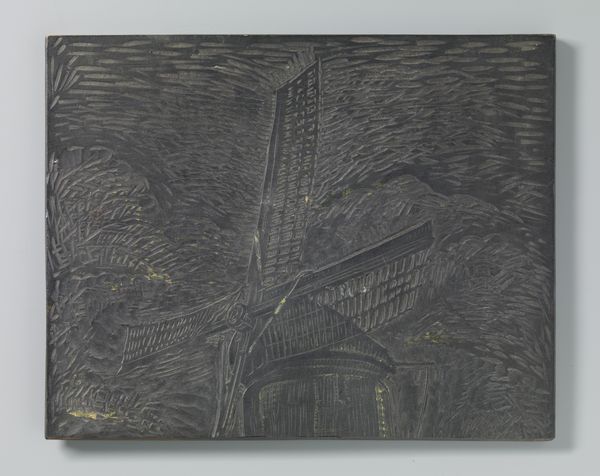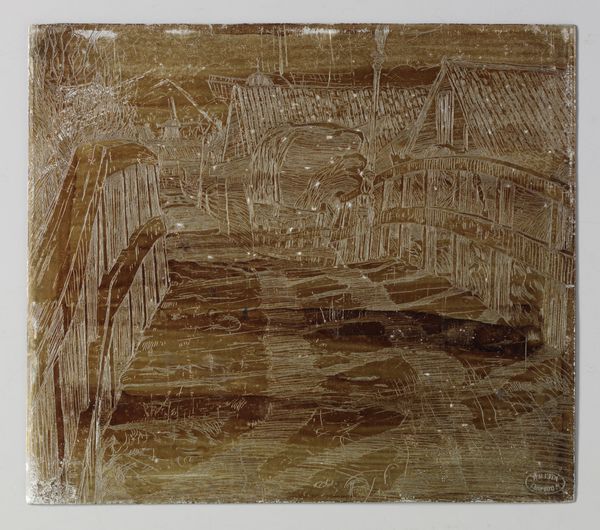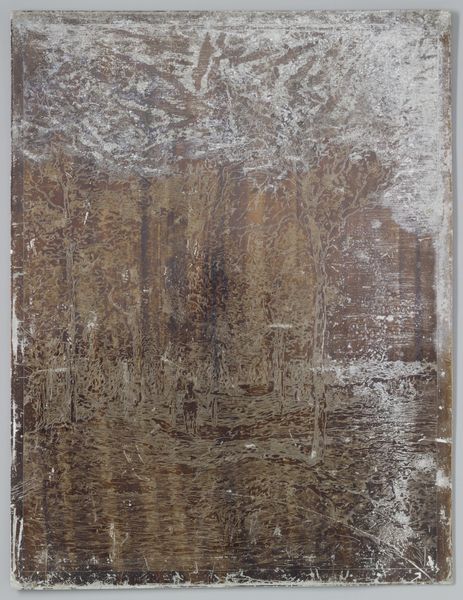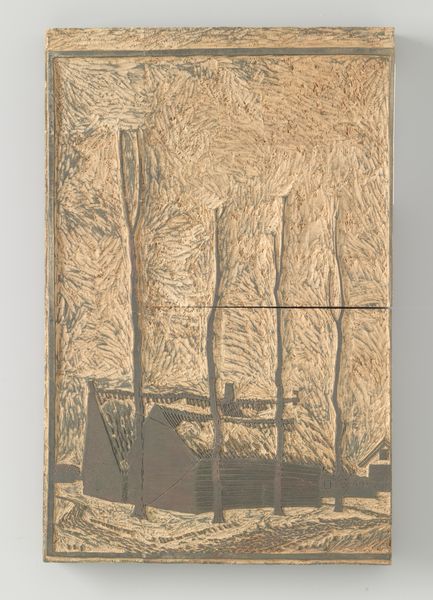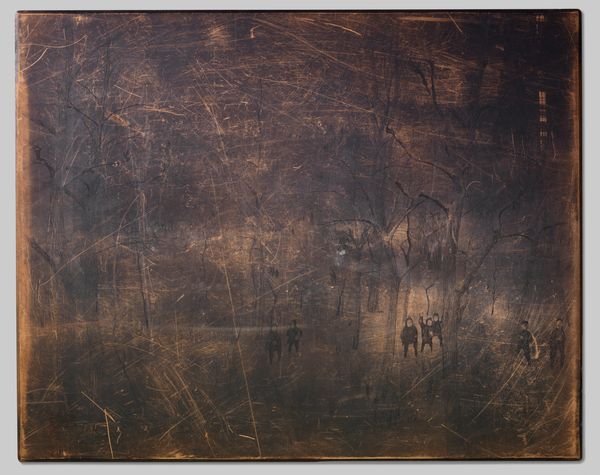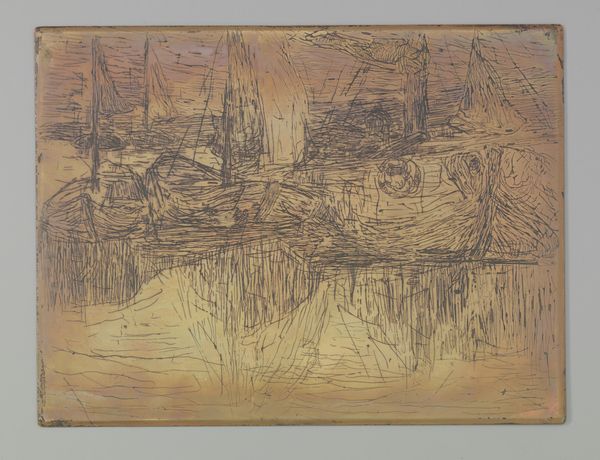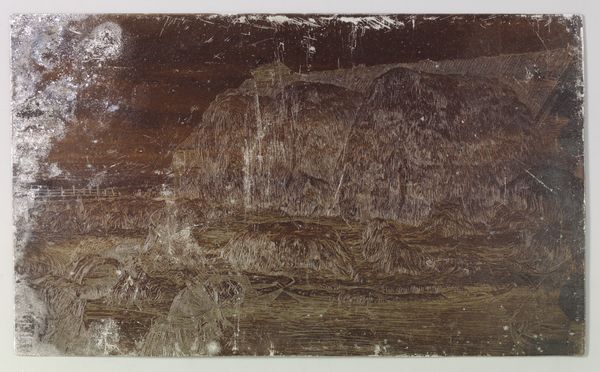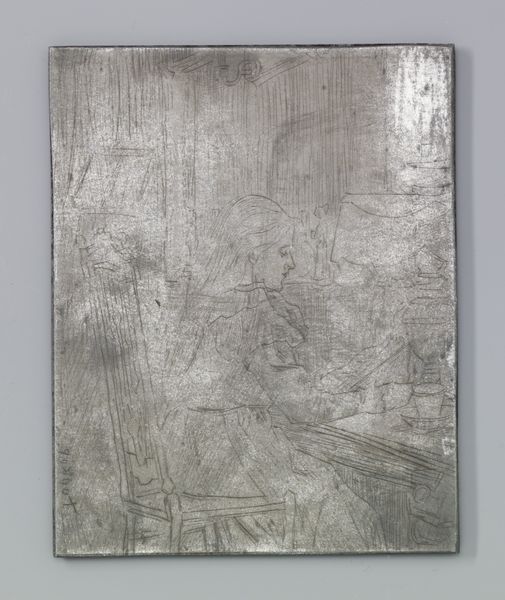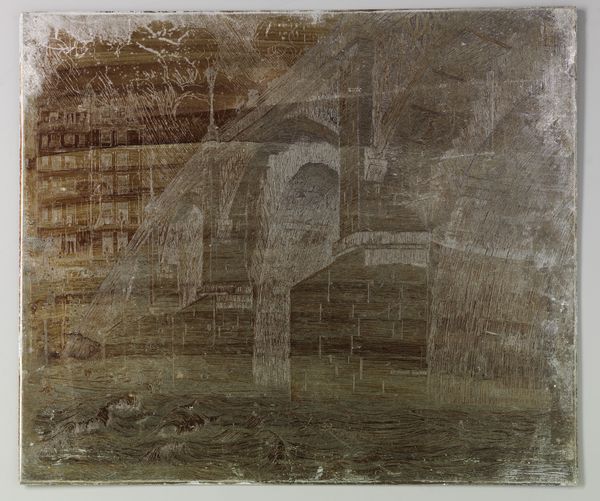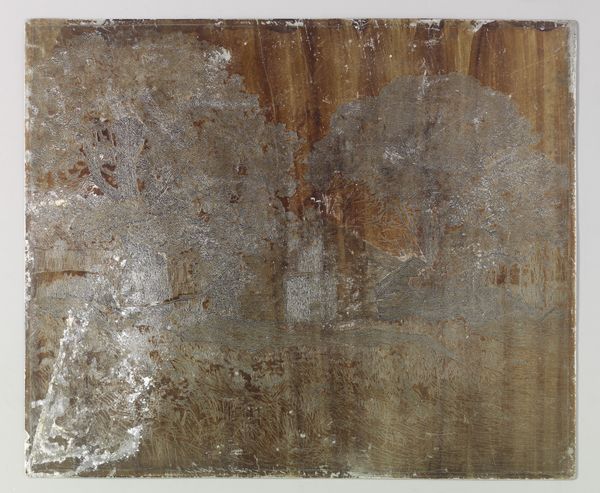
Dimensions: height 228 mm, width 304 mm
Copyright: Rijks Museum: Open Domain
Editor: Here we have Willem Witsen's "View of the Victoria Embankment in London," created sometime between 1890 and 1906. It's a print, an etching to be precise. The brown and gray tones evoke such a somber mood. What strikes you about this piece? Curator: Immediately, the masterful manipulation of line is apparent. Notice how the density and direction of the etched lines articulate form and space. The reflections in the wet street are suggested not through mimetic representation but rather through strategic mark-making. Editor: That's true, the lines are so expressive! I was focused on the muted palette and how that sets a certain feeling. Curator: Colour here serves a secondary function. The tonality reinforces the structural framework established by the lines. The artist uses a restrained palette to draw attention to the graphic qualities of the work. Are the compositional elements balanced, or is there a visual disruption? Editor: It feels a little off-balance. Maybe it's the large tree on the left versus the figures on the right, it grounds that corner and adds contrast. Curator: Precisely. The placement of these visual anchors generates a tension, which invites the viewer to actively engage with the formal dynamics of the print. Witsen eschews traditional pictorial balance for something more nuanced, more dynamic. The relationship that he has with the urban setting seems to go beyond the subject itself and uses the subject's materiality for expression. Editor: I never considered imbalance could be a tool! I focused too much on how the print made me *feel*. Seeing how line and composition create visual tension makes the image more captivating. Curator: By understanding these key principles, one gains a deeper understanding of its inherent complexities and its timeless beauty.
Comments
No comments
Be the first to comment and join the conversation on the ultimate creative platform.
